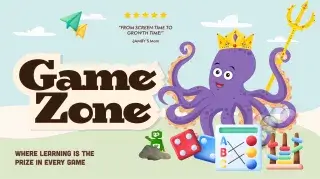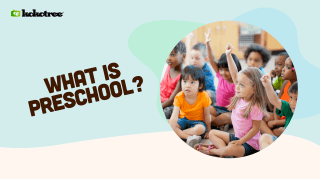
The simple joy of Bean Bag Toss, beloved by toddlers and preschoolers alike, is an experience full of fun and learning benevolence. This fantastic pastime, greatly popular among the fascinating games for kids, expertly combines play with pedagogy by fostering valuable skills such as gross motor development and hand-eye coordination. By blending amusement with learning and growth, Bean Bag Toss becomes the perfect consent to kid’s joy and educational development.
What is the Bean Bag Toss?
Bean Bag Toss is an entertaining game that works seamlessly in developing a child’s gross motor skills and coordination. It involves the simple action of aiming and throwing bags, typically filled with beans, onto a set target. This game is not just a pastime, but also a practical tool for early education, making it an ideal addition to a collection of toddler games.
Videos and games that keep preschoolers busy.
For ages 2-6. They watch and play for 20 minutes. You get a break.
⭐ 5,000+ parents get daily breaks with Kokotree.
Try it Free →Works in 30 seconds • No credit card • Cancel anytime
What You’ll Need to Play Bean Bag Toss
- Bean Bags: You will need at least four to six beanbags of varying colours.
- Targets: These can be baskets, play tunnels, hoops, or any object that you can aim a bean bag towards.
- Marked Lines: You’ll need something to mark throw lines like chalk, tape, or a string.
- Open Space: Enough room for your little ones to move around and toss the bags comfortably.
Objective of Bean Bag Toss
The main purpose of the Bean Bag Toss is to toss or throw a bean bag into a specific target. It motivates children to focus on their objective and encourages them to move, aim, and throw accurately – developing their motor skills and coordination in a fun and exciting way.
How to Play Bean Bag Toss
- Set up your target(s) at a suitable distance from the starting mark.
- Each player stands behind the starting line and takes turns throwing the bags at the target.
- Points are scored when a bag lands in or on the target. The number of points can depend on the difficulty of the target.
- The player with the most points after a set number of rounds wins the game.
Skill Development
This game effortlessly nurtures a variety of skills such as:
- Musical Chairs: Requires children to pay attention, respond quickly, and move their bodies in sync with the music,
- Motor Skills: Through tossing and catching, children can significantly improve their gross motor skills and dexterity.
- Hand-eye Coordination: Hitting the target helps enhance hand-eye coordination.
- Cognitive Abilities: By calculating points and tracking player turns, the game also promotes cognitive development.
Variations of the Bean Bag Toss
To keep the game invigorating and stimulating, you may introduce variations such as:
- Moving Targets: Make the game more challenging by using a moving target.
- Multiple Targets: Use multiple targets of varying difficulty levels.
- Timed Rounds: Set a time limit for each round to ramp up the excitement.
Tips for Parents/Teachers
- Start with larger, closer targets. As the child improves, gradually increase the challenge.
- Encourage your child and celebrate their successes to keep them motivated.
- Turn it into a friendly competition by involving friends or family members to make the game more enjoyable.
Common Questions about Bean Bag Toss
- What age is appropriate for Bean Bag Toss? The game is suitable for toddlers and preschoolers, aged two and above.
- Can Bean Bag Toss be played indoors? Yes, as long as you have enough space and safe, suitable targets.
- What can be used as targets? Anything like baskets, buckets, hoops, or marked areas can work as targets.
- How can the game be made more challenging? By using smaller targets, increasing distances, or introducing moving targets.
- How many bean bags are needed to play? Typically, four to six bean bags are enough to play the game.
Safety Precautions
Keep this game safe by following precautions such as ensuring the play area is clean and free from hazards, having soft and safe targets, and supervising younger children while playing. Always remember, safety first!
Time to Toss!
To wrap up, Bean Bag Toss is more than just an entertaining pastime. It’s intricately woven within the framework of preschool games, serving the dual purpose of fun and educational skill development – from motor skills to cognitive abilities. Let’s embrace this delightful game and get ready to toss some fun into our little ones’ learning experience.
















